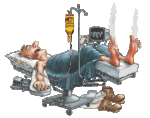Wikipedia
Diesel Winter Grade
[FONT="]United States[/FONT]
[FONT="]In the United States the states do not have a legislation on a fixed time frame when winter diesel must meet a specific temperature characteristics. The ASTM D 975 standard does not specify a specific value for the cold flow requirements of diesel fuel. Instead, it suggests that one measure the cloud point to be no more than 6°C higher than the 10th percentile minimum ambient temperature for the month the fuel will be used. The 10th percentile temperature corresponds to the minimum temperature that would be reached no more than 3 days out of 30 for the month (
decile). The ASTM D 975 contains overview maps that show the expected tenth percentile temperature for every month for each state.
[34][/FONT]
[FONT="]As with these guidelines gas stations offer winter diesel ready for the road - there are two ways to achieve this:[/FONT]
- [FONT="]winter blend - the gas station has blended the No.2 diesel with No.1 kerosine by some percentage.[/FONT]
- [FONT="]winterized diesel - the No.2 diesel has been treated with additives by the diesel supplier.[/FONT]
[FONT="]As the treatment with additives is a cheaper way (1:40000
[35]) to enhance No.2 fuel in winter most stations offer winterized diesel in cold weather conditions. In regions with cold weather in winter, most gas stations offer No.1 fuel at the same pump allowing drivers to decide for themselves on a matching winter blend.[/FONT]
[FONT="]Operation[/FONT]
[FONT="]Diesel fuel is prone to
waxing or
gelling in cold weather; both are terms for the solidification of diesel oil into a partially crystalline state. Below the
Cloud Point the fuel begins to develop solid wax particles giving it a cloudy appearance. The presence of solidified waxes thickens the oil and clogs fuel filters and injectors in engines. The crystals build up in the fuel line (especially in fuel filters) until a point that the engine gets starved of fuel causing it to stop running.[/FONT]
[FONT="]The
Cold Filter Plugging Point (CFPP) is based on a standardized test that indicates the lowest temperature of diesel fuel to still pass through a standardized filtration device in a specified time when cooled under certain condition. Similarly the "Low Temperature Flow Test" (ASTM D4539
[1]) indicates the winter performance of diesel with improver additives. Note that both the CFPP and LTFT temperature is some degrees above the
Pour Point temperature when diesel fuel loses its fluid characteristics so that pumps would stop operating.[/FONT]
[FONT="]There are a number of counter measures available to allow diesel engines to continue to operate in cold weather conditions. Note that once the diesel motor car is started it may operate at temperatures below the CFPP - most engines have a
spill return system, by which any excess fuel from the injector pump and injectors is returned to the fuel tank. Once the engine has warmed, returning warm fuel prevents waxing in the tank.[/FONT]
[FONT="]
[/FONT]
[FONT="]Also: Diesel Fuel Basics (somewhat scientific)[/FONT]
[FONT="]http://www.fuelmanagement.com/pdf/Diesel_Fuel_Basics.pdf
And: NATO Fuels
http://www.nato.int/docu/logi-en/1997/lo-15a.htm
[/FONT]


